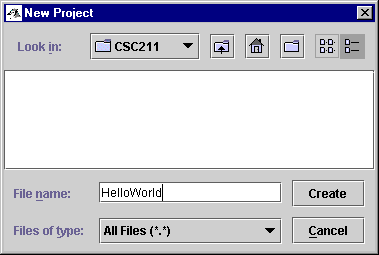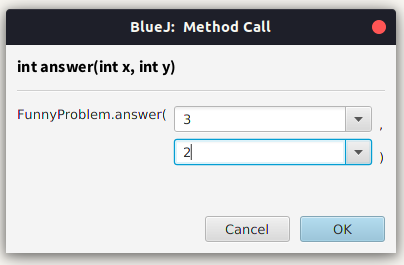

- #Bluej package directory full#
- #Bluej package directory code#
- #Bluej package directory password#
- #Bluej package directory windows 7#
#Bluej package directory code#
#Bluej package directory password#
Fixed a bug in saving the password for Git in the teamwork.Compiler errors can now be seen in a list pane when accessibility mode is turned on.Many different accessibility improvements, especially to the terminal, codepad, but also the general interface.
#Bluej package directory windows 7#
#Bluej package directory full#
This means that the same class, loaded by two different class loaders, is seen by the Virtual Machine as two completely different types.A full list of bug fixes can be found on Github. The runtime identity of a class in Java is defined by the fully qualified class name and its defining class loader.

With BlueJ just click on Tools, Preferences, Libraries, and add the. The above is simplified, and demands that MainClass be in the default package, or a package called source, which isn't very desirable. Apart from this requirement, importing these packages and classes is the same as if they were in their full, expanded, directory structure.įor example, to compile and run a class from a project's top directory (that contains the two directories /source and /libraries) you could use the following command:Ĭompilation $ javac -classpath libraries/lib.jar source/MainClass.javaĮxecution $ java -classpath libraries/lib.jar source/MainClass jar file, you must ensure that the file is in the current classpath (both at compile- and execution-time). If you are importing library packages and classes that reside in a. For example a company called Your Company Inc., would use a package name something like this: .YourClass. For that reason Vendors usually use their domain name in reverse order. The Java package needs to be unique across Vendors to avoid name collisions. In some operating systems, the directory names are not case sensitive. This eases to distinguish a package from a class name. Package convention Ī package name should start with a lower character.

This particular example is fairly unlikely, but if you are working with non-Oracle libraries, it may be more likely to happen. If you change this to import the error will be at the import instead of within your code.įurthermore, if you import javax.swing.* and import java.util.*, and is later added in a future version of Java, your code that uses Queue (java.util) will fail to compile. Even though it seems as if it was imported, the compiler is giving the error report at the first mention of JFraim, which is half-way through your code, instead of the point where you imported JFrame along with everything else in javax.swing. For example, if you use the above import to use JFrame, but then type JFraim frame = new JFraim(), the Java compiler will report an error similar to "Cannot find symbol: JFraim". While it may seem convenient, it may cause problems if you make a typographical error. In a class, a package is declared at the top of the source code using the keyword package: If no package is declared in a class, its package is the default package. For example, you have the two classes and which are not the same. Classes in different packages can have the same name. For this class, is called its fully qualified name because this syntax has no ambiguity. For instance, the standard class ArrayList is in the package java.util. So your application classes can be sorted into packages.Ī package is a name space that mainly contains classes and interfaces. Although you can browse them in their alphabetic order, it becomes confusing. If your application becomes quite big, you may have many classes. Navigate Language Fundamentals topic: ( v


 0 kommentar(er)
0 kommentar(er)
